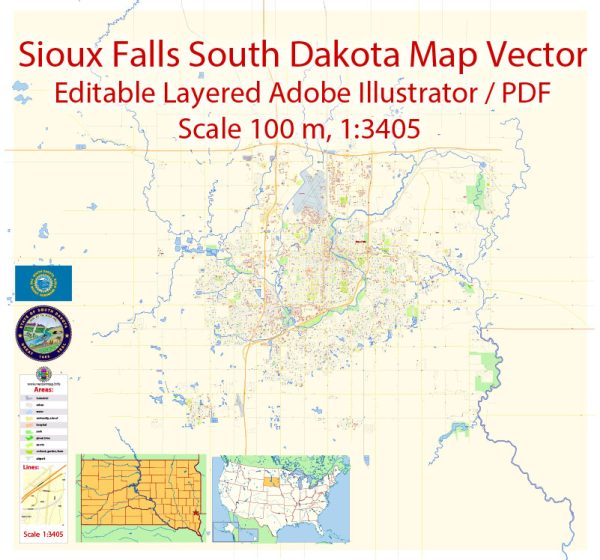Sioux Falls, located in southeastern South Dakota, has a rich history of urban development that dates back to the 19th century. The city’s growth and development have been influenced by various factors, including its strategic location, natural resources, transportation infrastructure, and economic activities.
- Early Settlement and Incorporation:
- Sioux Falls was initially inhabited by Native American tribes, including the Dakota Sioux. The area’s natural resources, particularly the Big Sioux River, attracted European settlers.
- The city was officially founded in 1856 with the establishment of a small community around the falls of the Big Sioux River.
- In 1883, Sioux Falls was officially incorporated as a city, marking a significant step in its urban development.
- Economic Drivers:
- The city’s early economy was driven by agriculture and milling. The falls of the Big Sioux River provided water power for mills, facilitating the growth of the milling industry.
- The completion of the railroad in the late 19th century played a crucial role in connecting Sioux Falls to national markets, boosting trade and commerce.
- Industrialization and Growth:
- The early 20th century saw industrialization, with the emergence of manufacturing and processing industries.
- The city’s population grew steadily, and infrastructure such as schools, hospitals, and utilities expanded to meet the needs of the growing community.
- Mid-20th Century:
- Sioux Falls experienced further economic diversification, with the development of healthcare, finance, and retail sectors.
- Interstate 90 and Interstate 29, major highways that intersect near Sioux Falls, enhanced the city’s accessibility and contributed to its role as a regional hub.
- Recent Developments:
- In the late 20th and early 21st centuries, Sioux Falls continued to grow and modernize. The city became a center for financial services, health care, and retail in the region.
- Urban revitalization projects, such as the development of downtown areas and the River Greenway, aimed to enhance the quality of life for residents and attract businesses.
- Population Growth and Demographics:
- Sioux Falls has consistently experienced population growth, becoming the largest city in South Dakota.
- The city’s demographics have diversified over the years, reflecting a mix of cultures and backgrounds.
- Cultural and Recreational Developments:
- Sioux Falls has invested in cultural and recreational amenities, including museums, parks, and entertainment venues.
- The city hosts events and festivals that contribute to its vibrant cultural scene.
In summary, Sioux Falls’ history of urban development is marked by its evolution from a small settlement to a thriving and diverse city. The interplay of economic activities, transportation infrastructure, and community initiatives has shaped the city’s growth over the years.


 Author: Kirill Shrayber, Ph.D.
Author: Kirill Shrayber, Ph.D.